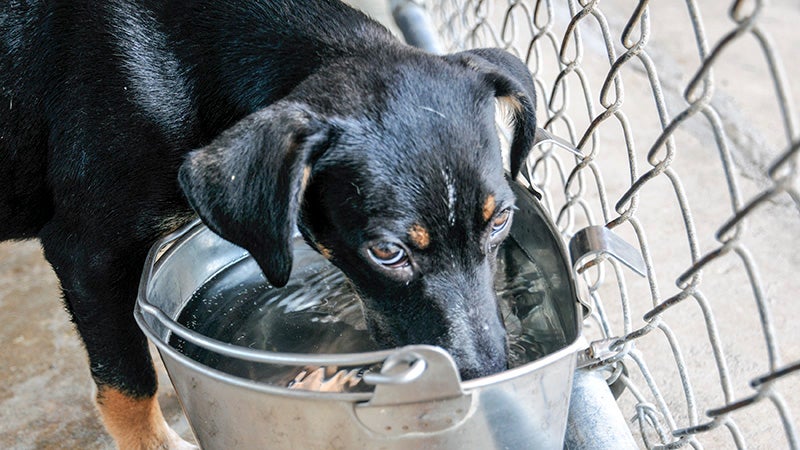Detecting heatstroke in pets
Published 7:00 am Saturday, July 22, 2017

- Puppies at the PRC SPCA rehydrate after playing in the field during a hot summer afternoon. Photo by Taylor Welsh
A dog’s fur is meant to protect it from the elements, but in a place like south Mississippi, dogs don’t get the luxury of a lot of cold weather; instead, they suffer the scorching heat of Magnolia State summers.
The heat can be damaging to canines, and can easily cause heat stroke if owners are not educated on the symptoms of the condition.
Pearl River County SPCA Director Judy Wheaton said because she and her staff are aware of the signs when one of their shelter dogs is suffering from heat exhaustion, they take precautions to avoid the condition. However, she said it is still easy to overlook the signs that a dog is overheating.
“The signs that a dog is suffering from heat exhaustion or heat stroke are very similar to that of a dog just being excited. But there are slight differences that give it away,” she said.
Signs of a dog suffering a heat related illness include excessive panting, drooling, increased body temperature, reddened gums, production of small or no amount of urine and a rapid heart rate. Though these signs are similar to that of an excited dog, Wheaton said the difference is in how exhausted the dog looks.
“If your dog looks like it is about to pass out, or is showing signs of being tired, it’s time to take your dog out of the heat,” Wheaton said.
To help a dog suffering from heat exhaustion or a heat stroke, Wheaton suggests spraying it with a hose or any clean water source. She said the water does not have to be ice cold, but once the fur is soaked, the dog’s internal temperature should get back to normal. Other ways to help a dog experiencing a heat-related illness include applying a cold ice pack to the dog’s head to help lower the body temperature and provide it with plenty of water to drink. Pet MD’s website states that massaging the legs of a dog with heat exhaustion helps the dog’s circulation and reduces the risks of shock.
“The worst thing you can do is just leave them outside. Imagine if you had a coat of fur on during a day it was nearly 100 degrees,” Wheaton said.
If a dog does go into shock, it will usually show signs such as lack of responsiveness, rapid shallow breathing, dilated pupils and severe weakness. If this happens, Wheaton said the animal should be taken to the closest veterinarian. While traveling to the clinic, keep the windows open and the air conditioner on a max setting, she said.




